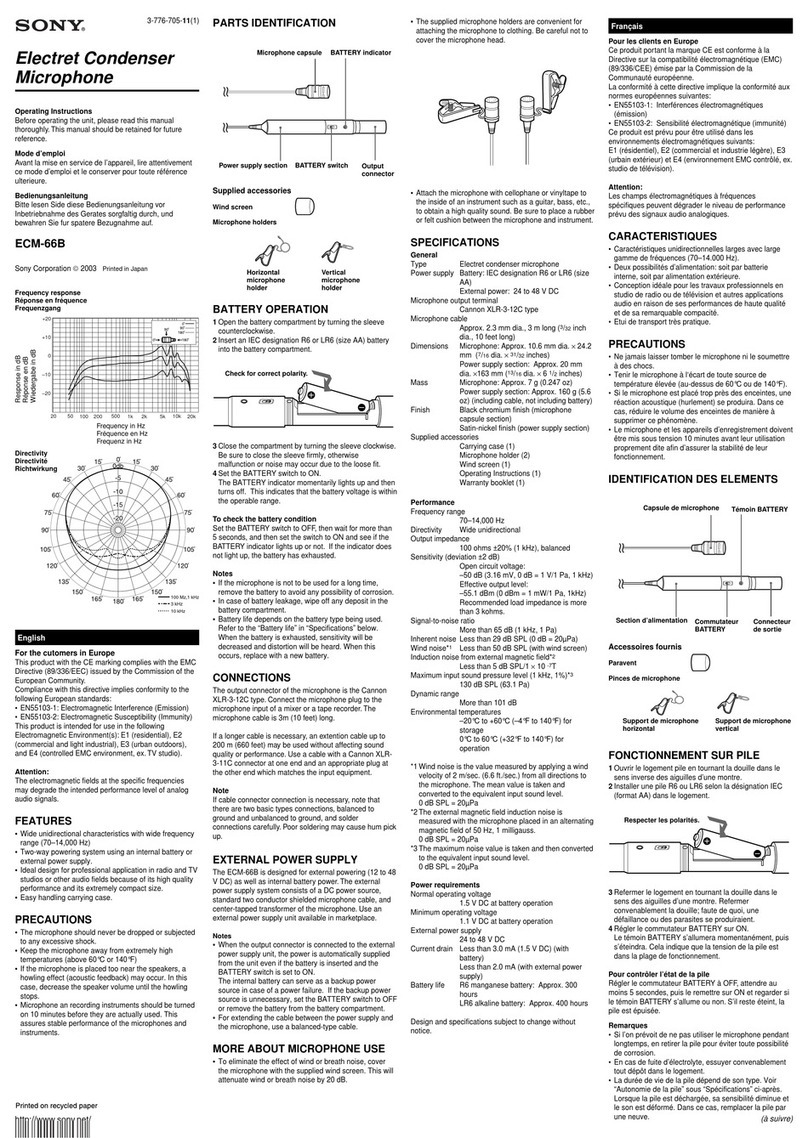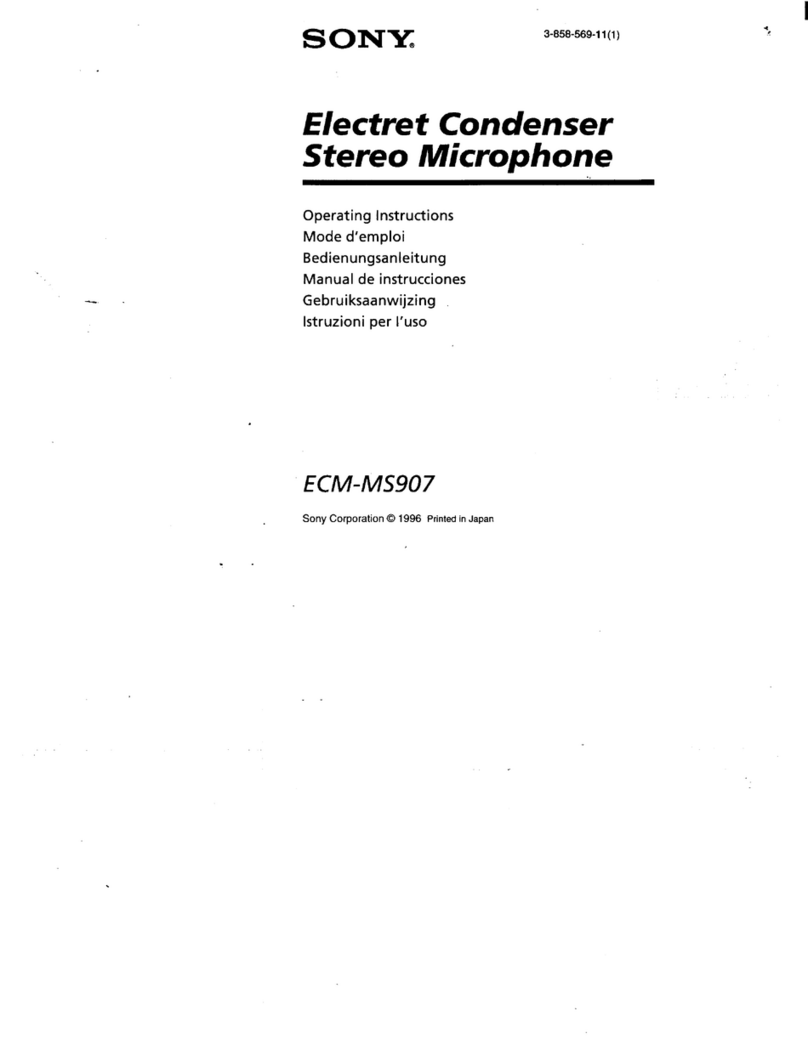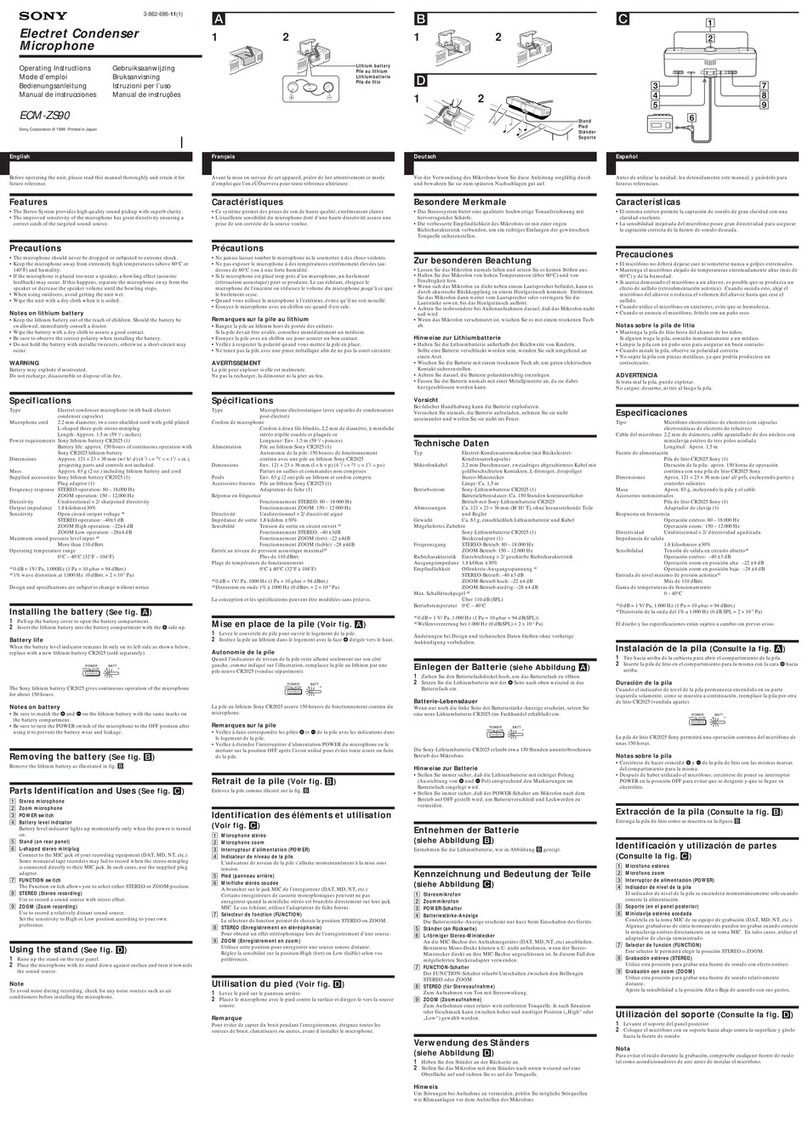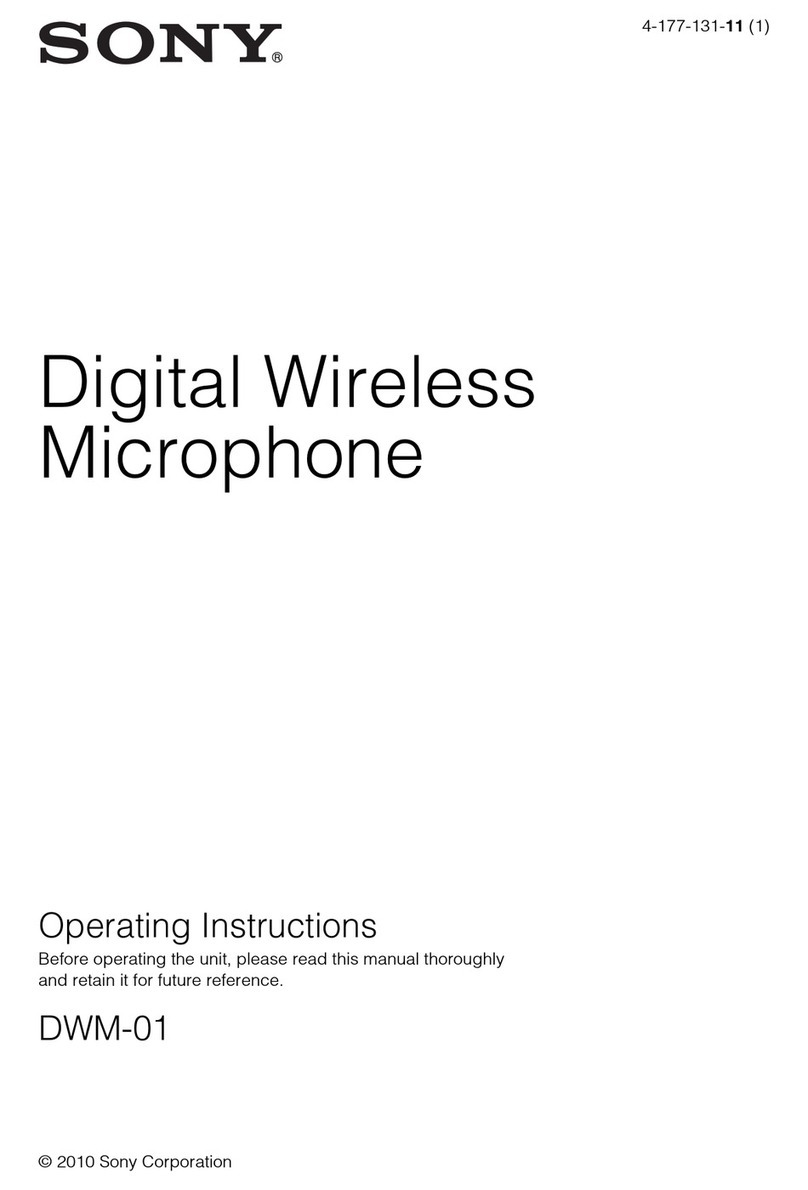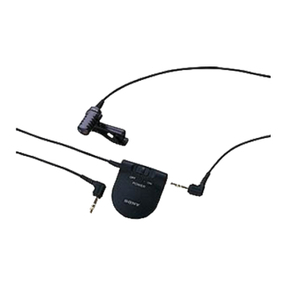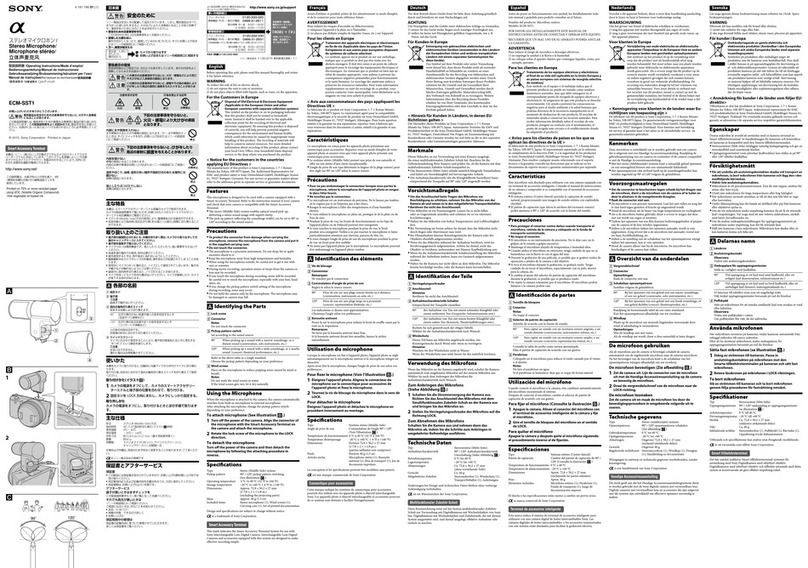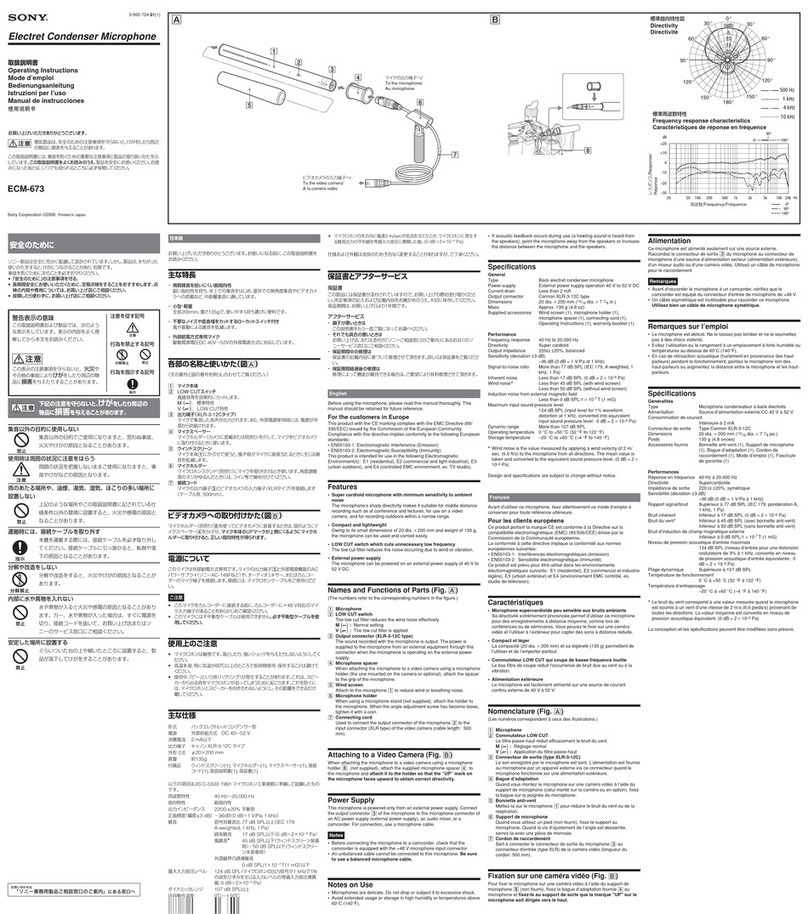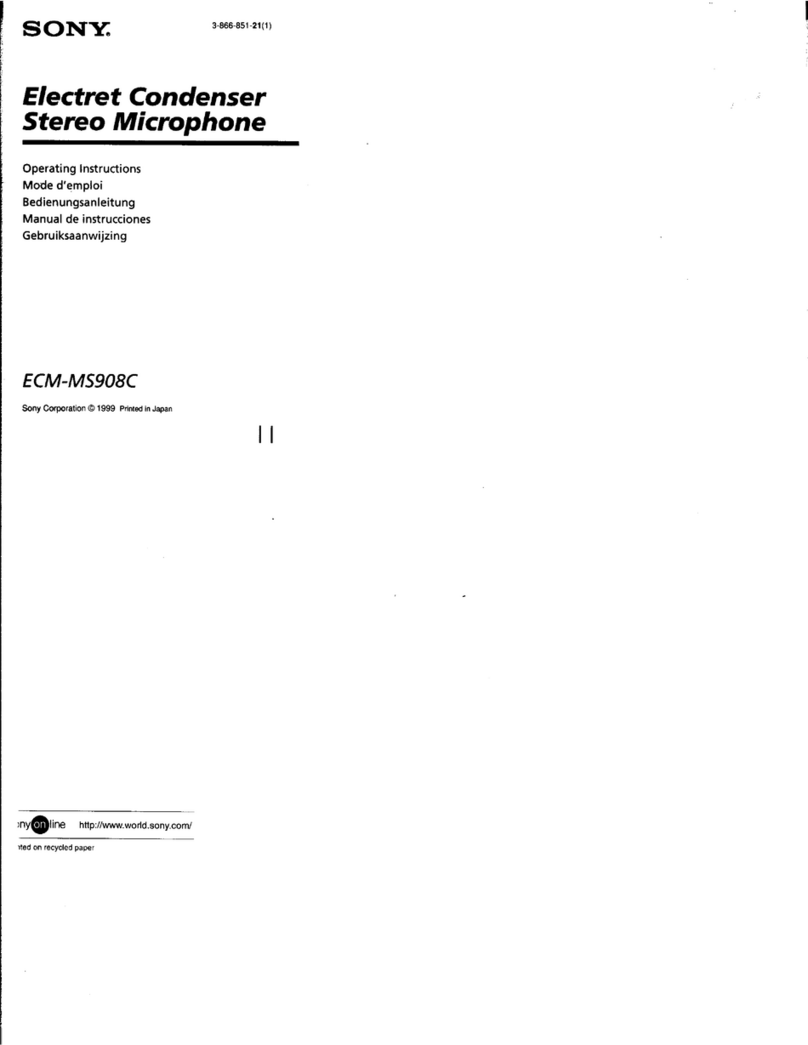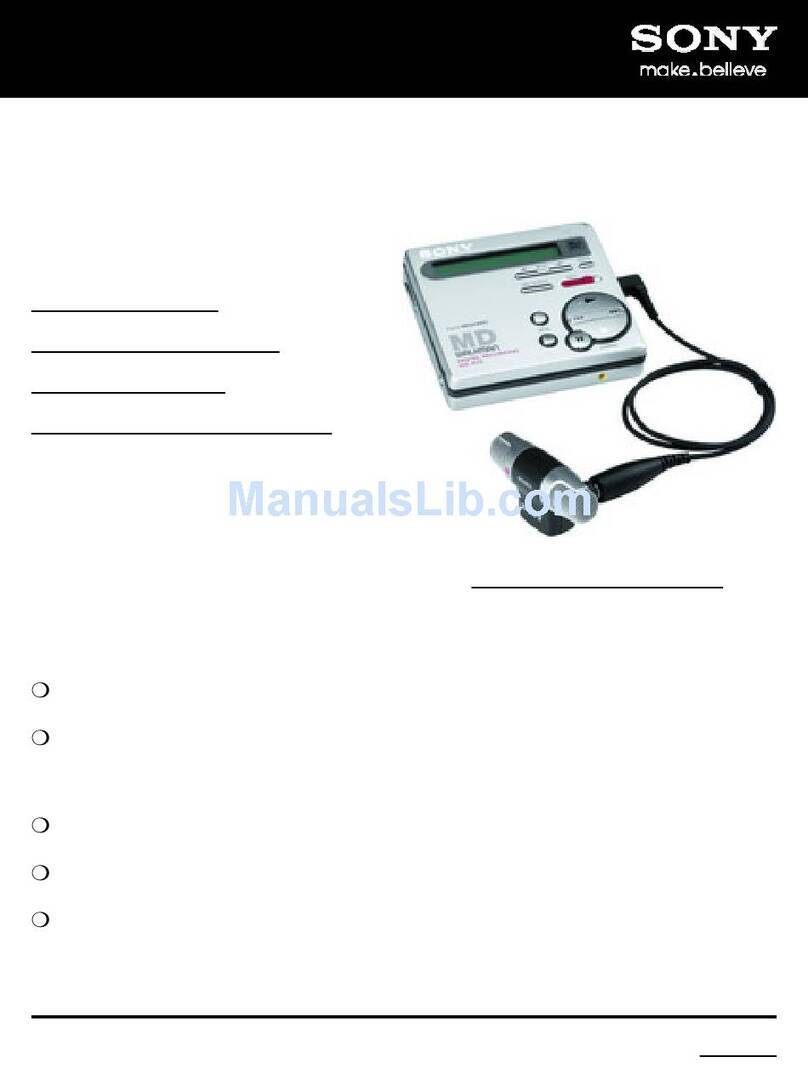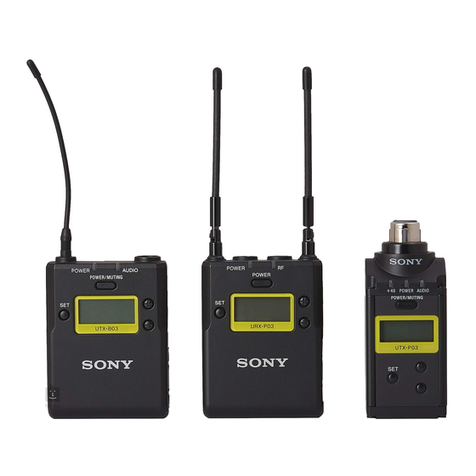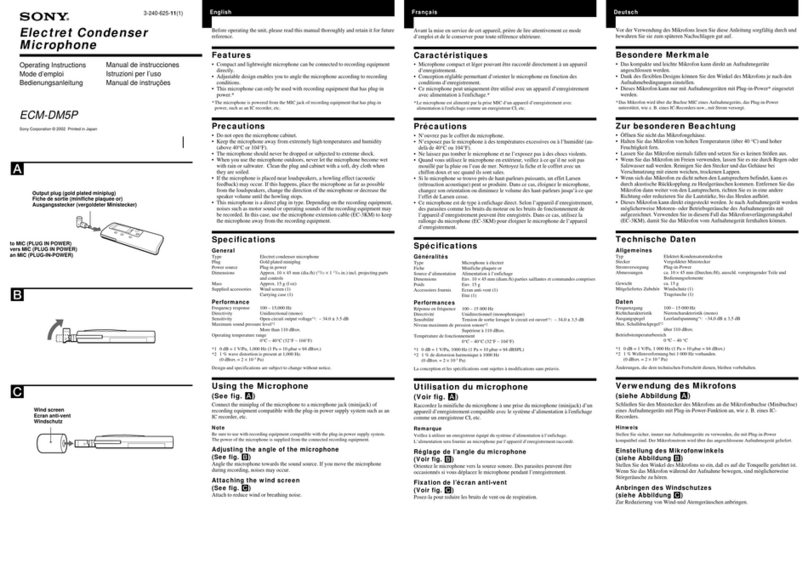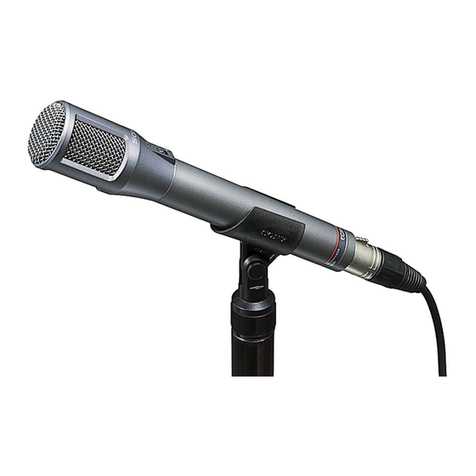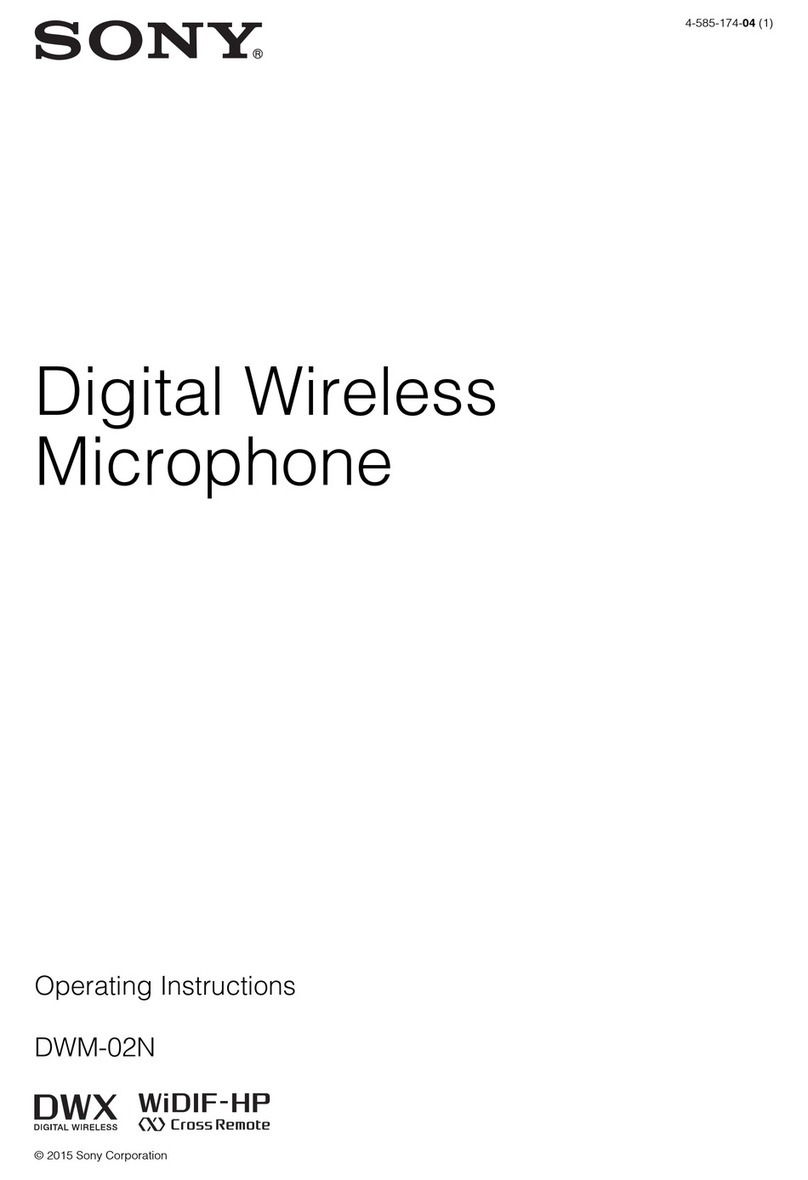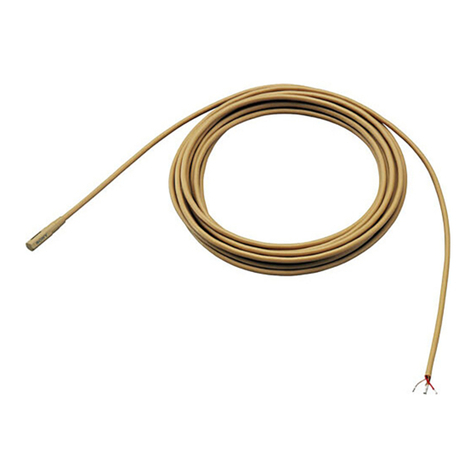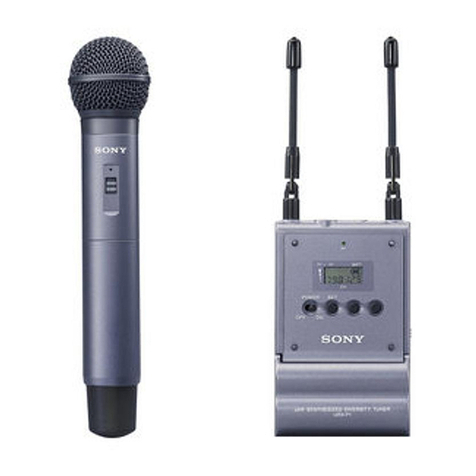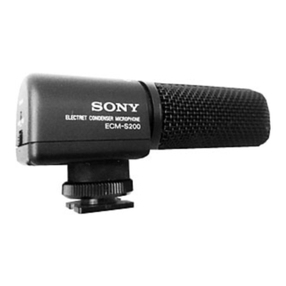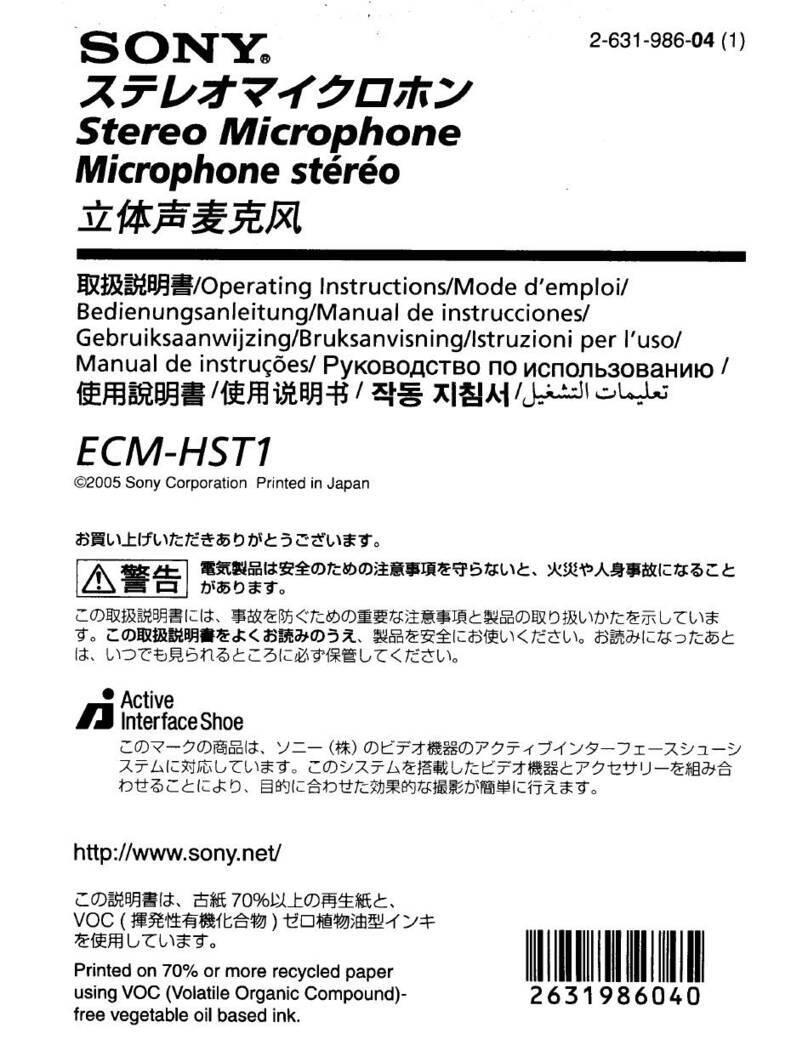
1-2 WRT-807B (U/CE)
Por la presente, Sony Corporation, declara que este
WRT-807B cumple con los requisitos esenciales y otras
disposiciones pertinentes de la Directiva 1999/5/EC.
Nota:
En algunos países, es posible utilizar bandas de frecuencias
adicionales con el consentimiento de las autoridades
nacionales.
Note for customers in Switzerland:
Before use, a request of concession for a wireless
microphone (Frequency Class 3) has to be submitted to
Bakom.
Note concernant les utilisateurs en Suisse:
Une demande de concession de microphone sans fil
(fréquence classe 3) doit être présentée au Bakom avant
d'utiliser l'appareil.
Hinweis für Kunden in der Schweiz:
Vor Inbetriebnahme ist eine Konzessionsanforderung für ein
drahtloses Mikrofon (Frequenzklasse 3) bei Bakom
einzureichen.
Note for customers in Finland:
To own and use, it is necessary to obtain an individual
licence of the Telecommunications Administration
Center.
Hinweis für Kunden in Luxemburg:
Vor Inbetriebnahme eines Geräts müssen die Frequenzen
gegebenenfalls nach den geltenden Vorschriften vor dem
Gebrauch von der “ILT”zugewiesen werden.
Nota per i clienti in Italia:
L’uso del prodotto sul territorio italiano èsoggetto alle
regolamentazioni del Codice Postale e delle
Telecomunicazioni art. 334.
Hinweis für Kunden in der Deutschland:
Vor Inbetriebnahme mußbei der zuständigen Außenstelle
der Regulierungsbehörde (Reg TP) eine Kanalzuweisung
beantragt werden.
Hinweis für Kunden in der Österreich:
Vor
lokalen
Inbetriebnahme ist die individuelle Genehmigung der
Behörden für das Telekommunikationsspektrum
erforderlich.
v
1
(GB)
English Precautions
• The unit is designed for use in ambient temperature range
of 0°C to 50°C (32°F to 122°F).
• Do not place the unit on or near heat sources, such as
lighting equipment, power amplifiers, or in a place subject
to direct sunlight or excessive moisture. In such places,
the external finish or internal parts of the unit may be
damaged.
• If the unit is used in a very humid or dusty place or in a
place subject to an active gas, clean its surface as well as
the connectors with a dry, soft cloth soon after use.
Lengthy use of the unit in such places or not cleaning it
after its use in such places may shorten its life.
• When cleaning the unit, never use organic solvents such as
thinners or benzine, which will damage the finish of the
unit.
• The unit has been factory adjusted precisely. Do not
tamper with its internal parts or attempt to repair it.
• Do not attempt to recharge an alkaline battery.
• Do not dispose of a battery in fire. Do not disassemble or
short-cirtuit a battery.
• Make sure to use an LR6 (size-AA) alkaline battery.
• Make sure the poles of the battery match the + and –
markings in the battery holder.
• Remove the battery when the unit will not be used for a
long period of time.
Table of Contents
Precautions................................................................1
Introduction ...............................................................2
Transmitting Channel Band ..............................2
Features .............................................................2
Parts Identification....................................................4
Power Supply ............................................................ 7
Settings ......................................................................8
Initiating Setting Mode .....................................8
Changing the Transmitting Channel .................8
Changing the Input Attenuation Setting ..........10
Resetting the Accumulated Battery Use Time
Indication ...................................................11
Troubleshooting ......................................................12
Specifications..........................................................14
Error Messages ....................................................... 15
2
(GB)
Introduction
The WRT-807B is a UHF-synthesized wireless microphone
for use in a 800-MHz band UHF-synthesized wireless
microphone system.
The WRT-807B operates in conjunction with the MB-806A
with WRU-806B UHF Synthesized Tuner Unit for vocal
concentration.
The WRT-807B can be also used with existing Sony
wireless microphone systems consisting of the WRT-805B/
855B UHF Synthesized Transmitter and WRR-805B/855B/
862B UHF Synthesized Tuner, etc.
Transmitting Channel Band
The microphone/transmitter and tuners of wireless
microphone systems are classified by frequency band.
A 24-MHz frequency band is assigned to each microphone/
transmitter and tuner model.
In building a UHF wireless microphone system, be sure to
pair a microphone/transmitter with a tuner that has the same
TV channel number.
Features
Phase Locked Loop (PLL) synthesized system
The WRT-807B features a refined phase locked loop (PLL)
synthesizer circuit.
POWER switch with holding function
The POWER switch can be locked in the ON position to
protect against accidental power cut-offs.
Low-battery notification on tuner
When the microphone battery is low, the microphone sends a
warning to the WRR-805B/862B/WRU-806B in the form of
“Battery status information.”
This information is sent to the WRR-805B/862B/WRU-
806B about one hour before the battery goes dead to allow
the battery to be safely replaced.
When the WRR-805B/862B/WRU-806B receives this
information, the LED on tuner panel starts to flash.
Powered by readily available battery type
The built-in, high-efficiency DC-DC converter provides
about
single5 hours of continuous and stable operation with just a
LR6 (size-AA) alkaline battery.
